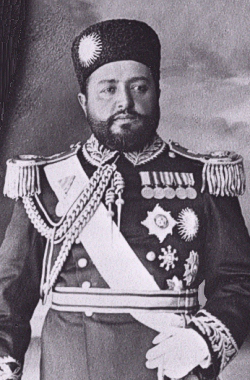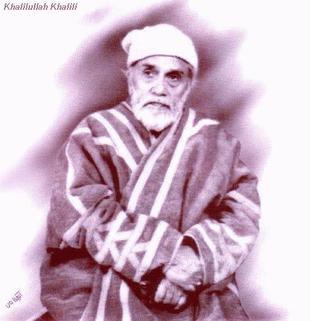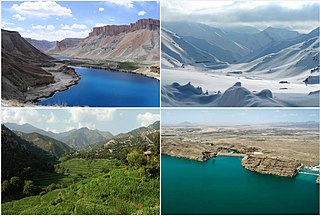| |||||
| Decades: | |||||
|---|---|---|---|---|---|
| See also: | Other events of 1911 List of years in Afghanistan | ||||
The following lists events that happened during 1911 in Afghanistan .
| |||||
| Decades: | |||||
|---|---|---|---|---|---|
| See also: | Other events of 1911 List of years in Afghanistan | ||||
The following lists events that happened during 1911 in Afghanistan .
An Afghan nationalist, Mahmud Tarzi, publishes the periodical Seraj ol-Akbar ("Torch of the News"). It is the country's first medium for the intellectual exchange of ideas, and its political influence extends beyond the boundaries of Afghanistan. [1]
Again Afghanistan is "happy in having no history". The amir is loyal in carrying out the agreement for the removal of outlaws to beyond fifty miles of the Indian frontier, but this has not wholly stopped the raids. In Afghanistan itself the road between Kabul and Jalalabad is for a considerable time unsafe for traders, but matters improve towards the end of the year. The amir directs much attention to the improvement of the main roads throughout the country, more especially in the direction of Jalalabad and Kandahar.

European influence in Afghanistan has been present in the country since the Victorian era, when the competing imperial powers of Britain and Russia contested for control over Afghanistan as part of the Great Game.

Jalalabad is the fifth-largest city of Afghanistan. It has a population of about 356,274, and serves as the capital of Nangarhar Province in the eastern part of the country, about 130 kilometres (80 mi) from the capital Kabul. Jalalabad is located at the junction of the Kabul River and the Kunar River in a plateau to the south of the Hindu Kush mountains. It is linked by the Kabul-Jalalabad Road to the west and Peshawar in Khyber Pakhtunkhwa, Pakistan, to the east through Torkham and the Khyber Pass.
Related to 1896 in Afghanistan: Negotiations are going on between the Indian government and the amir tending to the appointment of a joint commission for determining the last 100 miles (160 km) of Indo-Afghan frontier yet unsettled, from Landi Kotal in the Khyber to Nawar Kotal on the Kunar River.

The Third Anglo-Afghan War began on 6 May 1919 when the Emirate of Afghanistan invaded British India and ended with an armistice on 8 August 1919. The Anglo-Afghan Treaty of 1919 resulted in the Afghans gaining control of foreign affairs from Britain, and the recognition of the Durand Line as the border between Afghanistan and British India.

Habibullah Khan was the Emir of Afghanistan from 1901 until his assassination in 1919. He was the eldest son of the Emir Abdur Rahman Khan, whom he succeeded by right of primogeniture in October 1901. His grandfather was Mohammad Afzal Khan.

Ghazi Amanullah Khan was the sovereign of Afghanistan from 1919, first as Emir and after 1926 as King, until his abdication in 1929. After the end of the Third Anglo-Afghan War in August 1919, Afghanistan was able to relinquish its protected state status to proclaim independence and pursue an independent foreign policy free from the influence of the United Kingdom.

Mohammad Yaqub Khan was Emir of Afghanistan from February 21 to October 12, 1879. He was a Pashtun and the son of the previous ruler, Sher Ali Khan.

Faiz Muhammad Kāteb also known as Kāteb (کاتب) was a writer and historian. He was Afghan court chronicler, a skilled calligrapher and secretary to Habibullah Khan from 1901 to 1919.

Khalilullah Khalili was Afghanistan's foremost 20th century poet as well as a noted historian, university professor, diplomat and royal confidant. He was the last of the great classical Persian poets and among the first to introduce modern Persian poetry and Nimai style to Afghanistan. He had also expertise in Khorasani style and was a follower of Farrukhi Sistani. Almost alone among Afghanistan's poets, he enjoyed a following in Iran where his selected poems have been published. His works have been praised by renowned Iranian literary figures and intellectuals. Many see him as the greatest contemporary poet of the Persian language in Afghanistan. He is also known for his major work "Hero of Khorasan", a controversial biography of Habībullāh Kalakānī, Emir of Afghanistan in 1929.
The following lists events that happened during 1902 in Afghanistan.
The following lists events that happened during 1905 in Afghanistan.
The following lists events that happened during 1906 in Afghanistan.
The following lists events that happened during 1912 in Afghanistan.
The following lists events that happened during 1919 in Afghanistan.
The following lists events that happened during 1929 in Afghanistan. The Afghan Civil War continued from the previous year.

Tourism in Afghanistan is regulated by the Ministry of Information and Culture. There are at least 350 tourism companies operating in Afghanistan. Tourism was at its peak before the 1978 Saur Revolution, which was followed by the decades of warfare. Between 2013 and 2016, Afghan embassies issued between 15,000 and 20,000 tourist visas annually.

Mohammad Nadir Shah was King of Afghanistan from 15 October 1929 until his assassination in November 1933. Previously, he served as Minister of War, Afghan Ambassador to France, and as a general in the Royal Afghan Army. He and his son Mohammad Zahir Shah, who succeeded him, are part of the Musahiban.

Muhammad Mian Mansoor Ansari, was a leader and a political activist of the Indian independence movement. He was a grandson of Muhammad Qasim Nanautavi, one of the founders of Darul Uloom Deoband in 1868. Along with Mahmud Hasan Deobandi, he was one of the pioneer of the Silk Letter movement against British Raj.

Amir Ali Ahmad Khan, Shaghasi was an Afghan king from the Shaghasi family of the Barakzai tribe who was declared king of Afghanistan twice in 1929. He was first declared amir of Afghanistan by an influential cleric, Naqib Sahib on 20 January 1929, in eastern Afghanistan, but was defeated by Kalakani at Jagdalak on 19 February 1929. He was also declared as the amir of Afghanistan for the second time on 23 June 1929 in Kandahar, Afghanistan, by another highly influential Mufti Abd. Wasi Kandahari, but was defeated and captured by Kalakani on 3 July 1929.

Ghazi Mir Zaman Khan, who became known as Loy Khan Ghazi Mir Zaman Khan Kunari was a Royal Afghan Army General and War Hero of the Afghan War of Independence who fought for Pashtun freedom against the British Empire. He is regarded as a National Hero in Afghanistan.